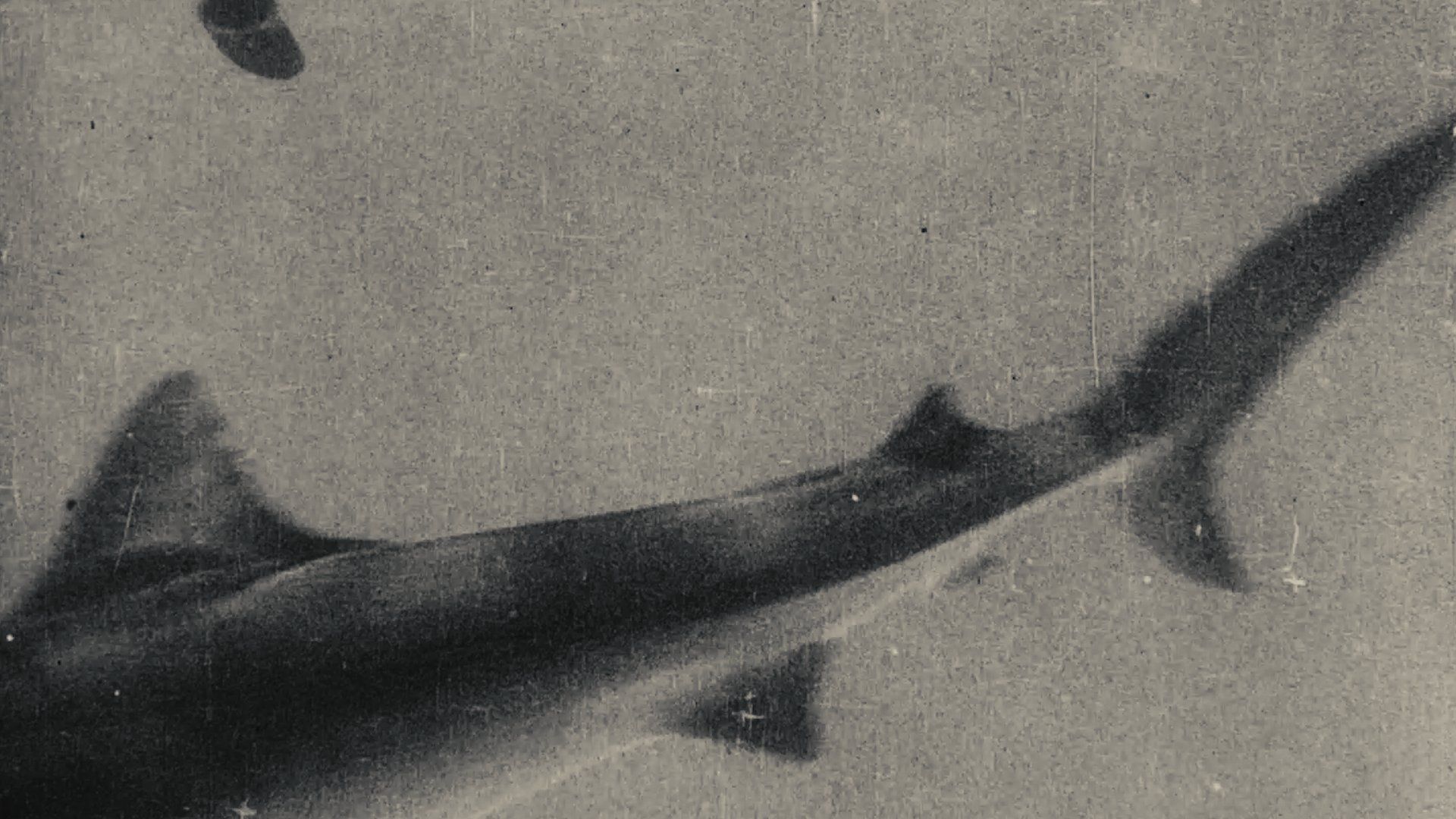


The first underwater footage isn’t quite the magical seascape you may have envisioned. It depicts a dead horse, a fearless filmmaker, and the slaughter of a shark.
In 1914, a young journalist named J.E. Williamson invented the “photosphere,” a device used to capture scenes under the sea. Williamson’s father was a sea captain, and had built an interlocking iron tube with a windowed chamber to aid him in deep sea scavenging. Williamson realized if he added a lamp and a larger viewing chamber, he could clamber down the tube with a camera and record what no one else ever had before.
After a test run with a still camera, Williamson’s next goal was to make a motion picture. But first, he needed money. So he promised his financiers the ultimate battle: man versus shark. Williamson set out for the Bahamas on the Jules Verne, a barge that would later set the stage for the world’s first underwater movie: Thirty Leagues Under the Sea (then later known as, The Terrors of the Deep).

The climax of the hour-long documentary was exactly what Williamson promised. Through the eyes of the photosphere, you see a dead horse suspended upside down beneath the warm ocean waters, bobbing rhythmically, as if it were trying to win a slow-motion underwater race. A shark takes the bait, while Williamson lies in wait.
In his memoir, Williamson remembered it like this: “I grasped the monster’s fin, felt my hand close upon it. With a twist, I was under the livid white belly at the spot I was trying to reach. With all my remaining strength I struck. A quivering thrill raced up my arm as I felt the blade bury itself to the hilt in the flesh…Then a blur, confusion—chaos.”
A century later, this violent underwater scene, which had set the precedent for the film adaptation of Verne’s 20,000 Leagues Under the Sea in 1916, had all but been forgotten, left behind like sunken treasure.
“Regarding film material, as far as I can determine, Thirty Leagues Under the Sea is still considered a lost film,” says Josie Walters-Johnston, reference librarian at the Library of Congress’s Moving Image Research Center.
So here it is, revived, a magic window into the very real story of Thirty Leagues Under the Sea.
